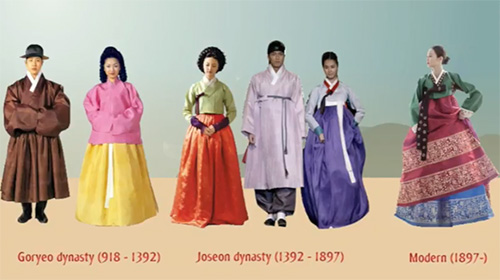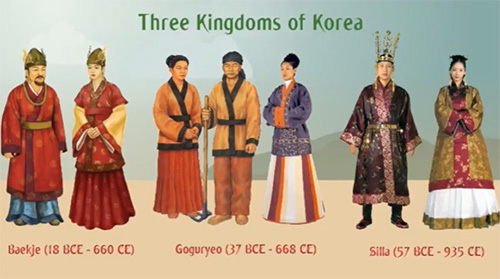Have you ever
wondered where some of the world’s most beautiful traditional dresses
originated from? We see Kimonos, Saris, and Hanboks in movies, period dramas,
or at ceremonies, but how did those iconic fashion styles come to be?
It’s been said that
Korea’s most famous traditional dress, the hanbok, became popular sometime in
the historical ‘Three Kingdoms’ era. As each empire in Korea exhibited its own
clothing trends and flair, the hanbok has also been fluctuating in style for
2000 years. Let’s jump back in time and examine how the hanbok first evolved
through the Baekje, Silla, and Goguryeo Empires.
Before we begin, the
term Hanbok literally translates to ‘Korean clothing.’ Hanboks are comprised of
two basic parts. Both men and women wear a top called ‘Jeogori’. The Jeogori
for women is secured by a string referred to as ‘Goreum.’ The lower part of a
woman’s hanbok is called a ‘Chima,’ or a skirt that extends to the floor. Men
dress in a loose-fitting pant that is referred to as ‘Baji.’ This ensemble is
then completed with silk shoes/footwear that are referred to as ‘Kkotsin.’
Evolution of Hanbok
The roots of the
Korean hanbok are found all the way back in the era of the Three Kingdoms,
which spanned approximately 57 B.C. to 668 A.D. Baekje lasted from
approximately 18 B.C. to 660 A.D. Goguryeo from approximately 37 B.C. to 668
A.D., and Silla - which inhabited the Korean Peninsula - from 57 B.C. to 935
A.D.
How did their styles
compare? As you can see in the picture, Baekje citizens exhibited broader
trousers compared to those worn by the people of Goguryeo, Their tops were
lengthier and looser as well.
A few hundred years
later, during the Goryeo Dynasty (918 – 1392), the Mongolians came into the
picture and influenced the look of the hanbok. You’ll notice the style change
through a shortened Chima and the Jeoguri tied across the abdomen.
Next, Joseon
Kingdom (1392 – 1897) served as a significant turning point in the hanbok’s
transformation. The Jeogori for women had been fabricated in a shorter, more
fitting style than in earlier years. People then began to wear Jeogori more on
the upper part of the abdomen. This Jeogori was to be worn close to the chest
and was often accompanied by a white band that lined the chest. This is the
hanbok style many of us have come to know and appreciate today.
 |
| The Evolution of the Korean Hanbok |
The hanbok style has
continued to change gradually since then, and today there are even trendy modern hanbok styles for everyday wear. What was once an outfit only for formal
occasions is becoming a fashion statement. So the next time you see one at a
temple or ceremony, consider the thousands of years of Korean history that
shaped the elegant dress in front of you.



No comments:
Post a Comment
Please Leave a Comment to show some Love ~ Thanks